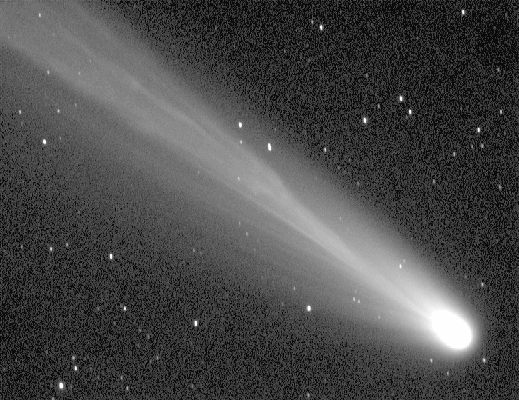Credit & Copyright: Michael Karrer
Explanation:
As
Comet Ikeya-Zhang approached the Sun two months ago,
it developed a complex blue ion tail.
The tail was composed of
ions that boiled off the
nucleus and were pushed away from the
Sun by the out-flowing fast-moving particles of the
solar wind.
Complexity in the tail is created by
comet nucleus rotation,
variability in the comet surface
evaporation rate, and variability of the
Sun's magnetic field and
solar wind.
The above animation documents how Comet Ikeya-Zhang's tail
changed over 30 minutes in ten consecutive 3-minute exposures on March 11.
Comet Ikeya Zhang is now fading as it heads back to the outer
Solar System.
It should
remain visible through a small telescope for another month.
Authors & editors:
Robert Nemiroff
(MTU) &
Jerry Bonnell
(USRA)
NASA Web Site Statements, Warnings,
and Disclaimers
NASA Official: Jay Norris.
Specific
rights apply.
A service of:
LHEA at
NASA /
GSFC
& Michigan Tech. U.
Based on Astronomy Picture
Of the Day
